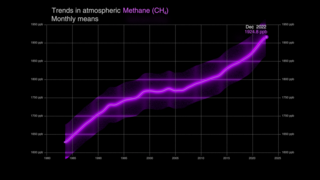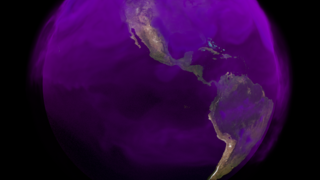Earth
ID: 4890
This visualization shows the GeoCarb spacecraft orbiting the Earth and taking data. The visualization starts close to the Earth with the Orbiting Carbon Observatory 2 (OCO-2) orbiting and taking carbon dioxide data shown as a thin trail underneath the spacecraft. These measurements are critical for our understanding of the climate. However, the OCO-2 swath is narrow and it takes a long time to cover a large region.
GeoCarb is a follow-on mission to OCO-2 which also measures carbon dioxide. However, GeoCarb's is in a geosynchronous orbit. This means that GeoCarb stays over the same location on the Earth, so it has a continuous view. GeoCarb orbits over North and South America. It is able to make scans of most of North and South America twice per day in the northern hemisphere summer. Geocarb has a resolution of 6km wide by 4km high; this means that each 'pixel' of GeoCarb data represents that area. Like OCO-2 GeoCarb can not make measurements at night.
In addition to carbon dioxide, GeoCarb also measures carbon monoxide, methane, and solar induced fluorescence. Each of these constituents provide additional, vital information for climate research.
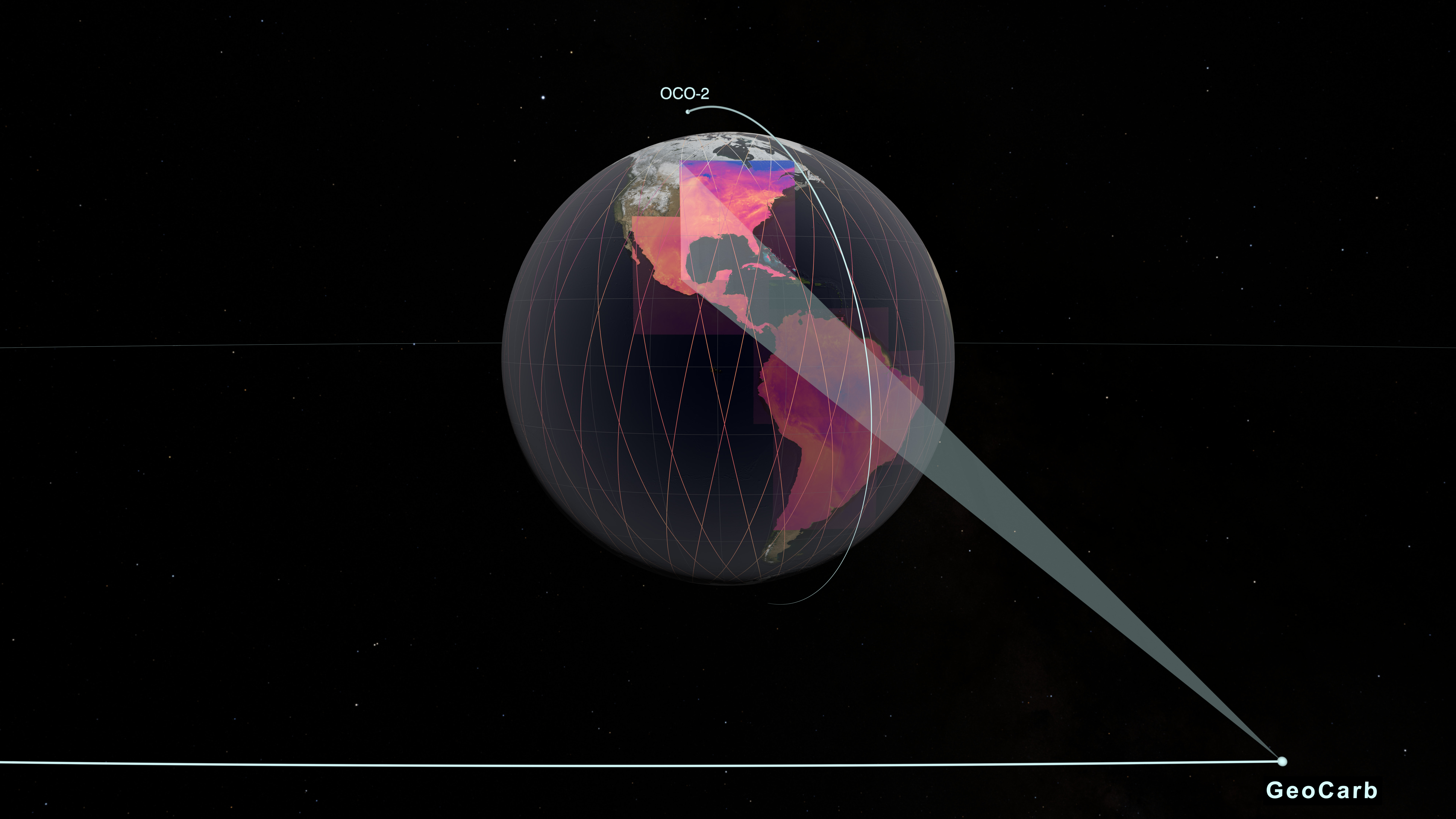
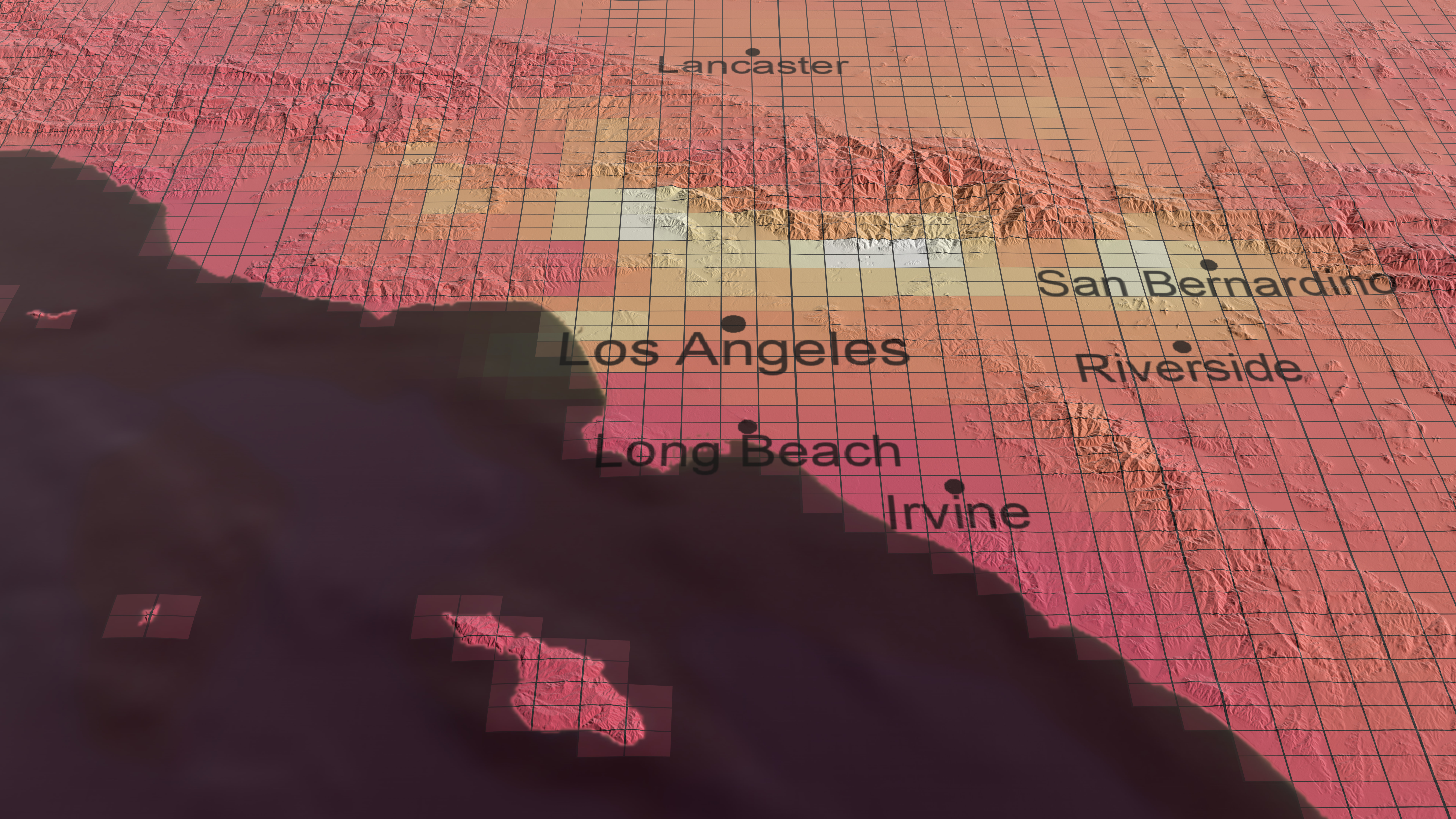
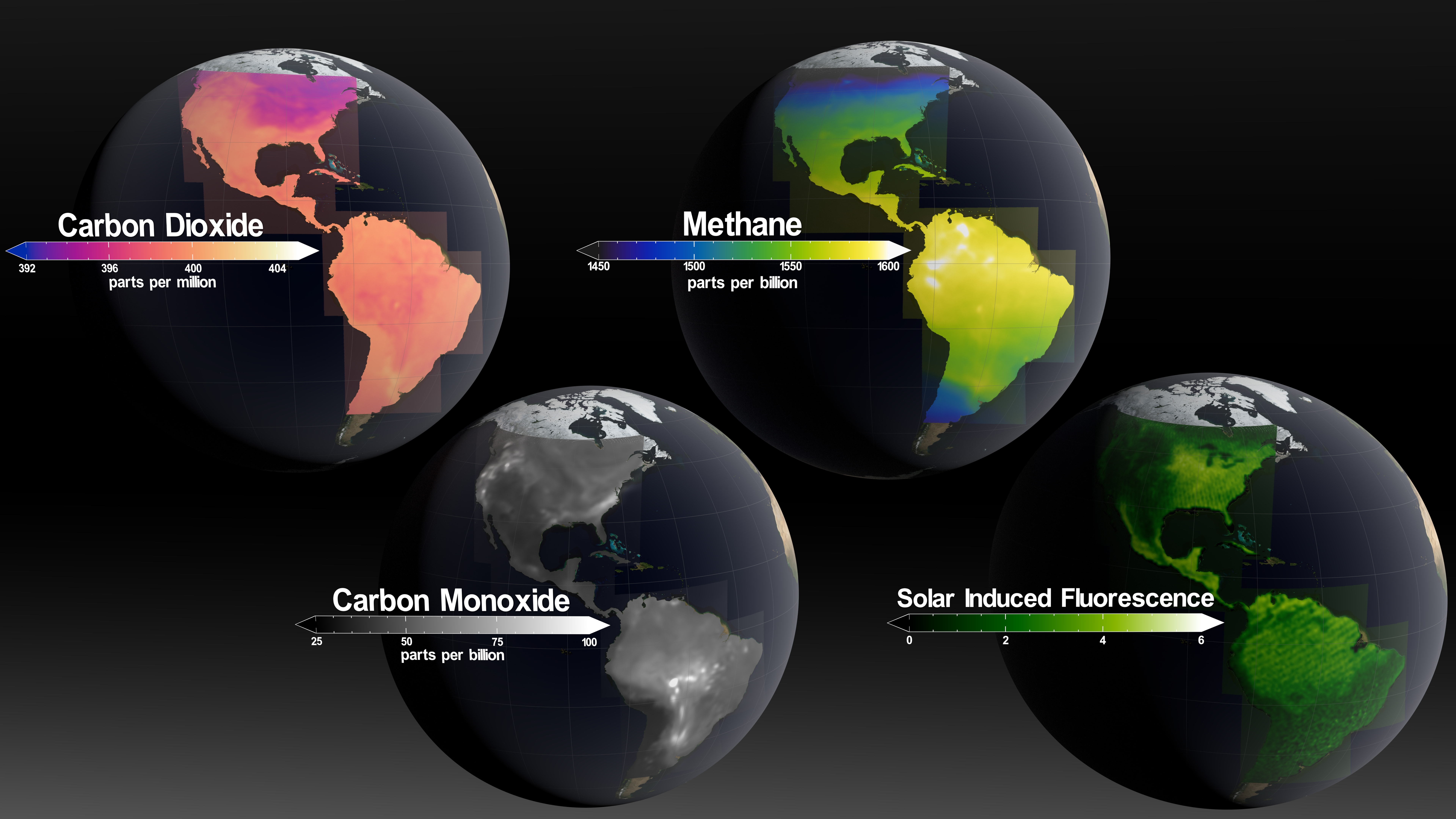
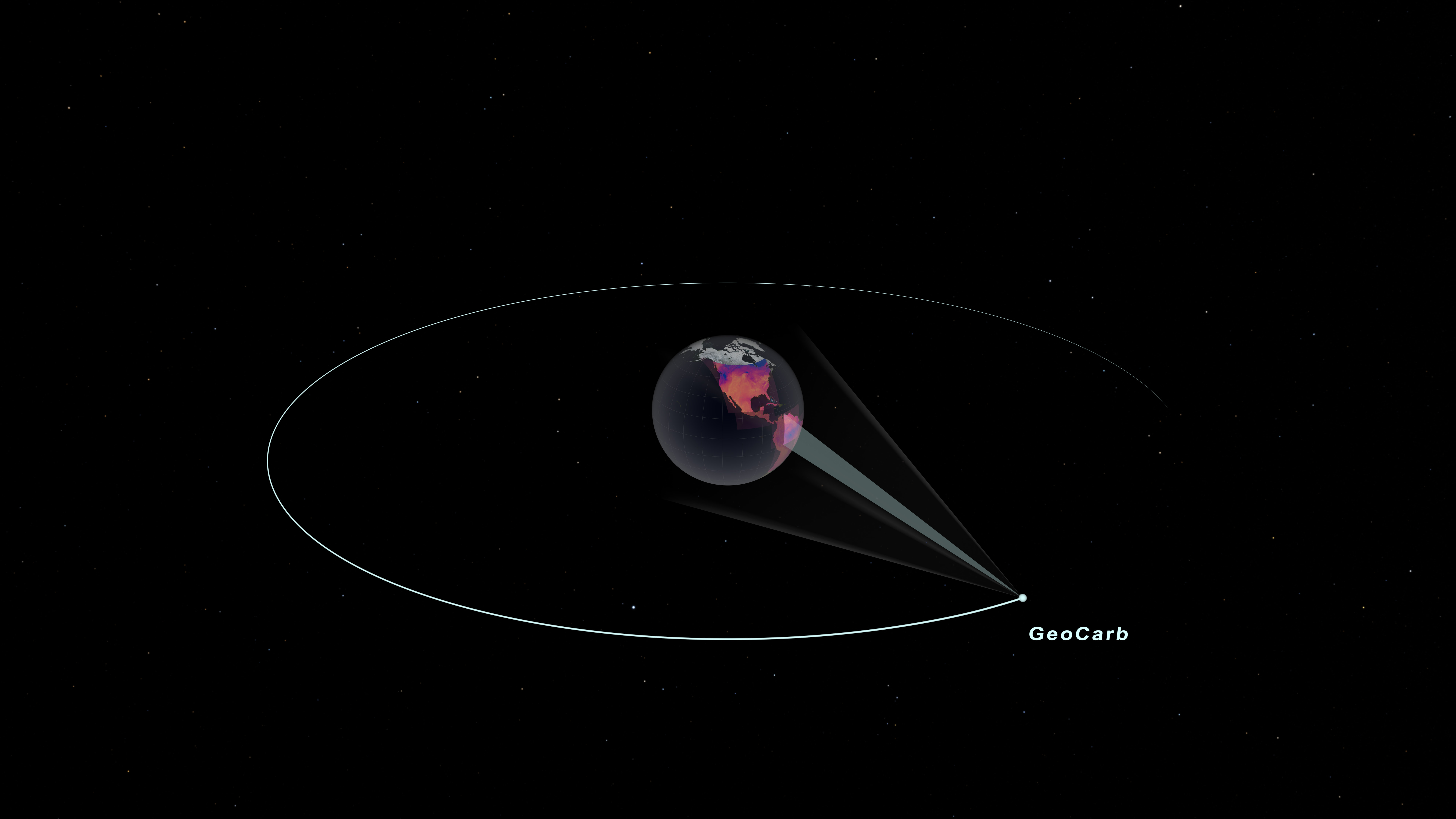




GeoCarb Observes Greenhouse Gasses from Geosynchronous Orbit
GeoCarb is a follow-on mission to OCO-2 which also measures carbon dioxide. However, GeoCarb's is in a geosynchronous orbit. This means that GeoCarb stays over the same location on the Earth, so it has a continuous view. GeoCarb orbits over North and South America. It is able to make scans of most of North and South America twice per day in the northern hemisphere summer. Geocarb has a resolution of 6km wide by 4km high; this means that each 'pixel' of GeoCarb data represents that area. Like OCO-2 GeoCarb can not make measurements at night.
In addition to carbon dioxide, GeoCarb also measures carbon monoxide, methane, and solar induced fluorescence. Each of these constituents provide additional, vital information for climate research.








Related
Visualization Credits
Greg Shirah (NASA/GSFC): Lead Visualizer
Sean Crowell (University of Oklahoma): Deputy Principal Investigator
Adam Matuszeski (NASA/GSFC): Deputy Project Manager
Timothy Miller (University of Oklahoma): Deputy Instrument Scientist
Lauren Capraro (University of Oklahoma): Communications Specialist
Berrien Moore (University of Oklahoma): Principal Investigator
Todd King (NASA/GSFC): Project Manager
Cindy Starr (Global Science and Technology, Inc.): Visualizer
Laurence Schuler (ADNET Systems, Inc.): Technical Support
Ian Jones (ADNET Systems, Inc.): Technical Support
Lori Perkins (NASA/GSFC): Visualizer
Mark SubbaRao (NASA/GSFC): Visualizer
Sean Crowell (University of Oklahoma): Deputy Principal Investigator
Adam Matuszeski (NASA/GSFC): Deputy Project Manager
Timothy Miller (University of Oklahoma): Deputy Instrument Scientist
Lauren Capraro (University of Oklahoma): Communications Specialist
Berrien Moore (University of Oklahoma): Principal Investigator
Todd King (NASA/GSFC): Project Manager
Cindy Starr (Global Science and Technology, Inc.): Visualizer
Laurence Schuler (ADNET Systems, Inc.): Technical Support
Ian Jones (ADNET Systems, Inc.): Technical Support
Lori Perkins (NASA/GSFC): Visualizer
Mark SubbaRao (NASA/GSFC): Visualizer
Please give credit for this item to:
NASA's Scientific Visualization Studio
NASA's Scientific Visualization Studio
Short URL to share this page:
https://svs.gsfc.nasa.gov/4890
Data Used:
Note: While we identify the data sets used in these visualizations, we do not store any further details nor the data sets themselves on our site.
Keywords:
DLESE >> Atmospheric science
DLESE >> Environmental science
GCMD >> Earth Science >> Atmosphere >> Air Quality >> Carbon Monoxide
GCMD >> Earth Science >> Atmosphere >> Atmospheric Chemistry/Carbon and Hydrocarbon Compounds >> Carbon Dioxide
GCMD >> Earth Science >> Atmosphere >> Atmospheric Chemistry/Carbon and Hydrocarbon Compounds >> Methane
GCMD >> Earth Science >> Oceans >> Ocean Optics >> Fluorescence
SVS >> Orbit
SVS >> Hyperwall
SVS >> Greenhouse Gases
NASA Science >> Earth
SVS >> 4K
GCMD keywords can be found on the Internet with the following citation: Olsen, L.M., G. Major, K. Shein, J. Scialdone, S. Ritz, T. Stevens, M. Morahan, A. Aleman, R. Vogel, S. Leicester, H. Weir, M. Meaux, S. Grebas, C.Solomon, M. Holland, T. Northcutt, R. A. Restrepo, R. Bilodeau, 2013. NASA/Global Change Master Directory (GCMD) Earth Science Keywords. Version 8.0.0.0.0
https://svs.gsfc.nasa.gov/4890
Data Used:
GTOPO30 Topography and Bathymetry
Data Compilation - USGSCelesTrak Spacecraft Orbit Ephemeris
EphemerisMetOp/GOME-2/GOME-2 Solar Induced Fluorescence at 740 nm
Observed Data - ESAGEOS-5/Nature Run/Chemistry also referred to as: G5NR-Chem
Model - NASA GMAOGEOS Carbon Dioxide
Model - GMAOGMAO GEOS Atmospheric Methane also referred to as: GMAO GEOS Atmospheric Methane
Model - GMAOalso referred to as: Example GeoCarb Scanning Scenario
Analysis
Example pre-launch scanning pattern for GeoCarb
Keywords:
DLESE >> Atmospheric science
DLESE >> Environmental science
GCMD >> Earth Science >> Atmosphere >> Air Quality >> Carbon Monoxide
GCMD >> Earth Science >> Atmosphere >> Atmospheric Chemistry/Carbon and Hydrocarbon Compounds >> Carbon Dioxide
GCMD >> Earth Science >> Atmosphere >> Atmospheric Chemistry/Carbon and Hydrocarbon Compounds >> Methane
GCMD >> Earth Science >> Oceans >> Ocean Optics >> Fluorescence
SVS >> Orbit
SVS >> Hyperwall
SVS >> Greenhouse Gases
NASA Science >> Earth
SVS >> 4K
GCMD keywords can be found on the Internet with the following citation: Olsen, L.M., G. Major, K. Shein, J. Scialdone, S. Ritz, T. Stevens, M. Morahan, A. Aleman, R. Vogel, S. Leicester, H. Weir, M. Meaux, S. Grebas, C.Solomon, M. Holland, T. Northcutt, R. A. Restrepo, R. Bilodeau, 2013. NASA/Global Change Master Directory (GCMD) Earth Science Keywords. Version 8.0.0.0.0
